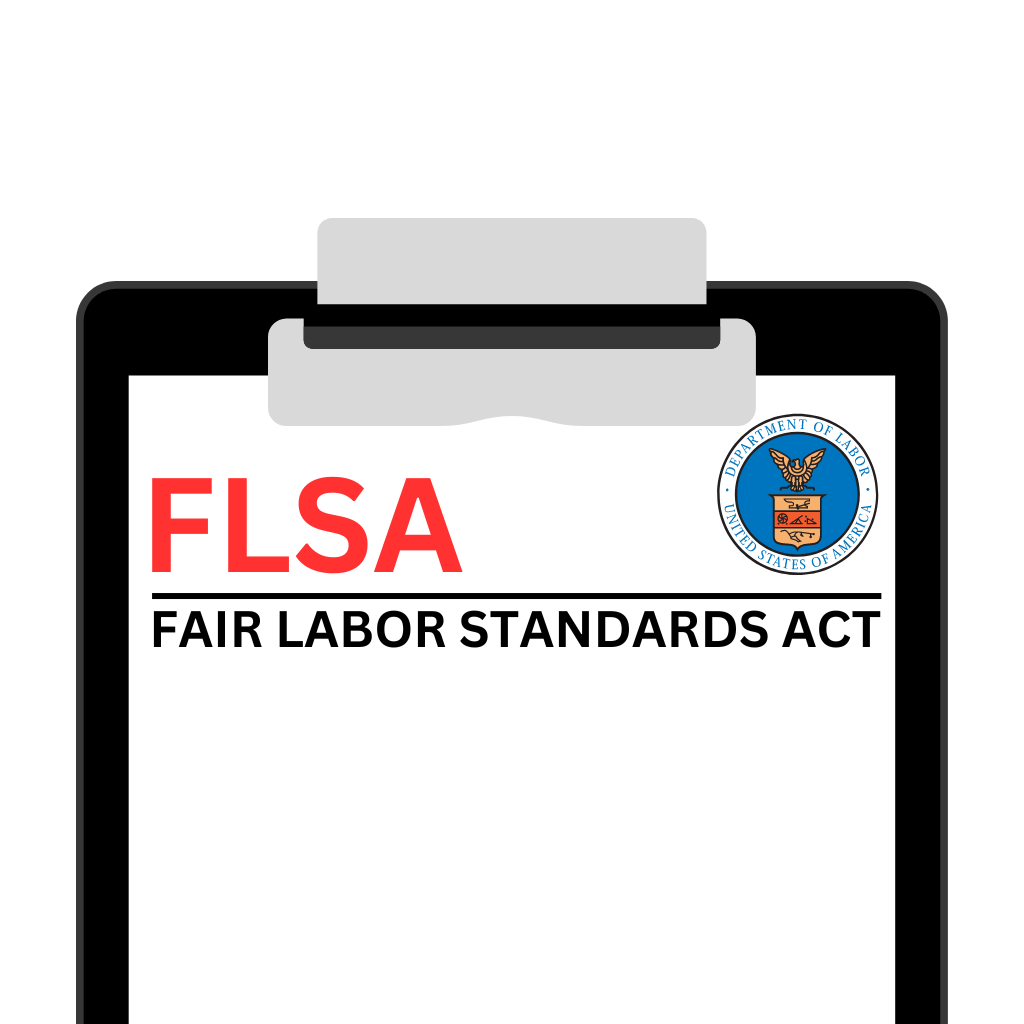In the United States, overtime pay represents a crucial aspect of employment law, safeguarding workers’ rights to fair compensation for hours worked beyond the standard workweek. While federal guidelines set the groundwork for overtime compensation, individual states often have their own rules that can provide additional protections to workers.
These state-specific regulations can vary significantly, affecting how overtime is calculated, who is eligible, and under what conditions. In instances where state and federal overtime legislation varies, employers are typically required to comply with the law that provides the greatest benefit to the employee.
For employers, knowledge of these laws is critical to ensure compliance and avoid legal complications. For employees, being informed about both federal and state overtime laws is key to safeguarding their rights to fair pay.
Disclaimer: Please note that the information provided in this blog post is accurate as of the time of writing. Laws and regulations are subject to change over time. While we strive to keep our content as up-to-date as possible, we encourage readers to consult official government resources or legal professionals for the most current information. This blog is intended for informational purposes only and should not be taken as legal advice.
Federal Overtime Pay Law – Fair Labor Standards Act (FLSA)
The Fair Labor Standards Act (FLSA) is the cornerstone of federal overtime pay regulations, ensuring employees receive proper compensation for hours worked beyond the standard workweek. Here’s a brief overview of the key components related to overtime under the FLSA:

Definition of Overtime Pay
Overtime pay is required for hours worked over 40 in a workweek, at a rate not less than one and a half times the employee’s regular rate of pay. This provision applies to most employees, with specific exemptions outlined by the Act.
Eligibility Criteria for Overtime Pay
The FLSA covers employees who work for companies that do business across state lines or make products for interstate commerce, including those whose jobs are directly connected to or play a key role in these activities. This includes, but is not limited to, employees in communications, transportation, and public agencies.
Calculation of Overtime Pay
The calculation of overtime pay is based on the employee’s regular rate of pay, which includes all remuneration for employment except for certain exclusions specified by the FLSA. Overtime must be calculated on a workweek basis, without averaging hours over two or more weeks.
Here’s how it works:
- Regular Rate Calculation – To calculate the regular rate, divide the employee’s total compensation in a workweek (including salary, hourly wages, and nondiscretionary bonuses) by the total hours worked in that week. The regular rate may vary if the employee receives different types of compensation.
- Time-and-a-Half Pay – Once the regular rate is determined, any hours worked beyond 40 in a workweek must be compensated at one and a half times the regular rate. For example, if the regular rate is $15 per hour, the overtime rate would be $22.50 per hour.
Exemptions and Exceptions
Not all employees are eligible for overtime pay under the FLSA. Exemptions include workers in some administrative, professional, and executive roles, and specific industries or roles may have unique rules. Moreover, the FLSA does not mandate overtime pay for work on weekends, holidays, or regular days of rest, unless it involves work exceeding the standard 40-hour workweek.
This foundational understanding of the FLSA’s overtime provisions sets the stage for exploring how state-specific laws may offer additional protections for workers beyond these federal guidelines.
Overtime Pay Laws by State
The following section provides insights into States that have enacted their own overtime pay legislation versus those adhering to federal standards.
Included is a breakdown of the specific daily or weekly work limits and the applicable overtime rates for each state. Any hours worked beyond these daily or weekly limits are considered overtime.
Alabama
State overtime law: No
Daily limit: No limit
Weekly limit: 40 hours
Overtime rate: 1.5 x regular hourly rate
Alaska
State overtime law: Yes – Learn more
Daily limit: 8 hours
Weekly limit: 40 hours
Overtime rate: 1.5 x regular hourly rate
Arizona
State overtime law: No
Daily limit: No limit
Weekly limit: 40 hours
Overtime rate: 1.5 x regular hourly rate
Arkansas
State overtime law: Yes – Learn more
Daily limit: No limit
Weekly limit: 40 hours
Overtime rate: 1.5 x regular hourly rate
California
State overtime law: Yes – Learn more
Daily limit: 8 hours (1.5x) / 12 hours (2x)
Weekly limit: 40 hours / 6-day workweek
Overtime rate:
- 1.5 x regular rate of pay for all hours worked above 8 hours up to and including 12 hours in any workday, and for the first eight hours worked on the seventh consecutive day of work in a workweek
- 2 x regular rate of pay for all hours worked above 12 hours in any workday and for all hours worked above 8 on the seventh consecutive day of work in a workweek
Colorado
State overtime law: Yes – Learn more
Daily limit: 12 hours
Weekly limit: 40 hours
Overtime rate: 1.5 x regular hourly rate
Connecticut
State overtime law: Yes – Learn more
Daily limit: No limit
Weekly limit: 40 hours
Overtime rate: 1.5 x regular hourly rate
Delaware
State overtime law: No
Daily limit: No limit
Weekly limit: 40 hours
Overtime rate: 1.5 x regular hourly rate
District of Columbia
State overtime law: No
Daily limit: No limit
Weekly limit: 40 hours
Overtime rate: 1.5 x regular hourly rate
Florida
State overtime law: No
Daily limit: No limit
Weekly limit: 40 hours
Overtime rate: 1.5 x regular hourly rate
Georgia
State overtime law: No
Daily limit: No limit
Weekly limit: 40 hours
Overtime rate: 1.5 x regular hourly rate
Hawaii
State overtime law: Yes – Learn more
Daily limit: No limit
Weekly limit: 40 hours
Overtime rate: 1.5 x regular hourly rate
Idaho
State overtime law: No
Daily limit: No limit
Weekly limit: 40 hours
Overtime rate: 1.5 x regular hourly rate
Illinois
State overtime law: Yes – Learn more
Daily limit: No limit
Weekly limit: 40 hours
Overtime rate: 1.5 x regular hourly rate
Indiana
State overtime law: Yes – Learn more
Daily limit: No limit
Weekly limit: 40 hours
Overtime rate: 1.5 x regular hourly rate
Iowa
State overtime law: No
Daily limit: No limit
Weekly limit: 40 hours
Overtime rate: 1.5 x regular hourly rate
Kansas
State overtime law: Yes – Learn more
Daily limit: No limit
Weekly limit: 46 hours
Overtime rate: 1.5 x regular hourly rate
Kentucky
State overtime law: Yes – Learn more
Daily limit: No limit
Weekly limit: 40 hours / 6-day workweek
Overtime rate: 1.5 x regular hourly rate
Louisiana
State overtime law: No
Daily limit: No limit
Weekly limit: 40 hours
Overtime rate: 1.5 x regular hourly rate
Maine
State overtime law: Yes – Learn more
Daily limit: No limit
Weekly limit: 40 hours
Overtime rate: 1.5 x regular hourly rate
Maryland
State overtime law: Yes – Learn more
Daily limit: No limit
Weekly limit: 40 hours (48 hours and 60 hours for specific groups of workers)
Overtime rate: 1.5 x regular hourly rate
Massachusetts
State overtime law: Yes – Learn more
Daily limit: No limit
Weekly limit: 40 hours
Overtime rate: 1.5 x regular hourly rate
Michigan
State overtime law: Yes – Learn more
Daily limit: No limit
Weekly limit: 40 hours
Overtime rate: 1.5 x regular hourly rate
Minnesota
State overtime law: Yes – Learn more
Daily limit: No limit
Weekly limit: 48 hours
Overtime rate: 1.5 x regular hourly rate
Mississippi
State overtime law: No
Daily limit: No limit
Weekly limit: 40 hours
Overtime rate: 1.5 x regular hourly rate
Missouri
State overtime law: Yes – Learn more
Daily limit: No limit
Weekly limit: 40 hours
Overtime rate: 1.5 x regular hourly rate
Montana
State overtime law: Yes – Learn more
Daily limit: No limit
Weekly limit: 40 hours
Overtime rate: 1.5 x regular hourly rate
Nebraska
State overtime law: No
Daily limit: No limit
Weekly limit: 40 hours
Overtime rate: 1.5 x regular hourly rate
Nevada
State overtime law: Yes – Learn more
Daily limit: 8 hours
Weekly limit: 40 hours
Overtime rate: 1.5 x regular hourly rate
New Hampshire
State overtime law: No
Daily limit: No limit
Weekly limit: 40 hours
Overtime rate: 1.5 x regular hourly rate
New Jersey
State overtime law: Yes – Learn more
Daily limit: No limit
Weekly limit: 40 hours
Overtime rate: 1.5 x regular hourly rate
New Mexico
State overtime law: Yes – Learn more
Daily limit: No limit
Weekly limit: 40 hours
Overtime rate: 1.5 x regular hourly rate
New York
State overtime law: Yes – Learn more
Daily limit: No limit
Weekly limit: 40 hours
Overtime rate: 1.5 x regular hourly rate
North Carolina
State overtime law: Yes – Learn more
Daily limit: No limit
Weekly limit: 40 hours
Overtime rate: 1.5 x regular hourly rate
North Dakota
State overtime law: Yes – Learn more
Daily limit: No limit
Weekly limit: 40 hours
Overtime rate: 1.5 x regular hourly rate
Ohio
State overtime law: Yes – Learn more
Daily limit: No limit
Weekly limit: 40 hours
Overtime rate: 1.5 x regular hourly rate
Oklahoma
State overtime law: No
Daily limit: No limit
Weekly limit: 40 hours
Overtime rate: 1.5 x regular hourly rate
Oregon
State overtime law: Yes – Learn more
Daily limit:
- No limit for most workers. Workers in canneries, driers and packing plants NOT located on farms and primarily processing products produced on that farm are required to be paid for any hours worked over 10 in a day
Weekly limit: 40 hours (55 hours for agricultural workers)
Overtime rate: 1.5 x regular hourly rate
Pennsylvania
State overtime law: Yes – Learn more
Daily limit: No limit
Weekly limit: 40 hours
Overtime rate: 1.5 x regular hourly rate
Rhode Island
State overtime law: Yes – Learn more
Daily limit: No limit
Weekly limit: 40 hours
Overtime rate: 1.5 x regular hourly rate
South Carolina
State overtime law: No
Daily limit: No limit
Weekly limit: 40 hours
Overtime rate: 1.5 x regular hourly rate
South Dakota
State overtime law: No
Daily limit: No limit
Weekly limit: 40 hours
Overtime rate: 1.5 x regular hourly rate
Utah
State overtime law: No
Daily limit: No limit
Weekly limit: 40 hours
Overtime rate: 1.5 x regular hourly rate
Vermont
State overtime law: Yes – Learn more
Daily limit: No limit
Weekly limit: 40 hours
Overtime rate: 1.5 x regular hourly rate
Virginia
State overtime law: Yes – Learn more
Daily limit: No limit
Weekly limit: 40 hours
Overtime rate: 1.5 x regular hourly rate
Washington
State overtime law: Yes – Learn more
Daily limit: No limit
Weekly limit: 40 hours
Overtime rate: 1.5 x regular hourly rate
West Virginia
State overtime law: Yes – Learn more
Daily limit: No limit
Weekly limit: 40 hours
Overtime rate: 1.5 x regular hourly rate
Wisconsin
State overtime law: Yes – Learn more
Daily limit: No limit
Weekly limit: 40 hours
Overtime rate: 1.5 x regular hourly rate
Wyoming
State overtime law: No
Daily limit: No limit
Weekly limit: 40 hours
Overtime rate: 1.5 x regular hourly rate
Overtime Pay Laws Compliance Tips
Following overtime pay laws requires meticulous management practices and the strategic use of Time and Attendance technology. Below are essential tips for employers who are currently navigating these regulatory landmines.

1. Maintain Accurate Timekeeping Records
Keeping detailed records of hours worked, both regular and overtime, is essential. Utilizing workforce management software equipped with Time & Attendance functions can automate this process.
2. Fair Scheduling Practices to Increase Employee Engagement
Formulate scheduling policies that ensure a fair distribution of work hours, aiming to reduce the necessity for excessive overtime. Workforce management tools that include Employee Scheduling capabilities via personal devices can aid in refining the scheduling process by taking into account various factors like employee preferences, skill levels, and compliance with labor regulations, thus crafting schedules that are both efficient and lawful.
3. Establish Transparent Overtime Policies
It’s crucial to clearly define and communicate your organization’s overtime policies to all employees. This includes clarifying the calculation of overtime, its applicability, and the compensation method. Workforce management software can be instrumental in sending automatic alerts to employees nearing or exceeding set overtime limits, enhancing transparency, and aiding compliance.
4. Utilize Time and Attendance Management Software
Integrating comprehensive time and attendance management software can significantly streamline the process of tracking time, calculating overtime, and processing payroll accurately. Such software not only automates the tracking and reporting of hours worked but also helps in identifying overtime trends, enabling employers to make informed decisions and ensure compliance with overtime pay laws effectively.
By implementing these strategies and harnessing the capabilities of workforce management software, employers can better navigate the complexities of overtime regulations, ensuring both compliance and fair compensation for their employees.
Conclusion
The intricate web of overtime pay laws across the United States, encompassing both federal and state levels, underscores the critical importance of staying informed and compliant. For businesses, navigating these regulations is essential not only to avoid legal complications but also to uphold fair labor practices, ensuring employees are compensated justly for their time and effort.
Maintaining compliance demands a rigorous approach to record-keeping, equitable scheduling, clear communication of overtime policies, and precise payroll processing. These are non-negotiable aspects of workforce management that, when handled efficiently, contribute to the smooth operation of businesses and the well-being of employees.
For organizations looking to streamline these processes and ensure compliance with overtime pay laws, leveraging the capabilities of advanced time and attendance software is a game-changer.
In this context, Softworks Time and Attendance Management Software stands out as a robust tool that can significantly ease the complexities of managing overtime. It offers a seamless way to automate time tracking, accurately calculate overtime, optimize schedules according to business needs and legal requirements, and ensure transparent communication regarding overtime policies.
Try Softworks Time and Attendance Management Software by booking a demo, and experience firsthand how it can transform your approach to managing overtime, fostering a compliant, efficient, and fair workplace.
Request a free Demo!
Take the first step towards a complete workforce management solution. Talk to us today!
Sources
- Overtime Pay, U.S. DEPARTMENT OF LABOR, Wage and Hour Division (.gov)
- Handy Reference Guide to the Fair Labor Standards Act, U.S. DEPARTMENT OF LABOR, Wage and Hour Division (.gov)
- Fact Sheet #23: Overtime Pay Requirements of the FLSA, U.S. DEPARTMENT OF LABOR, Wage and Hour Division (.gov)
- Minimum Wage Standard And Overtime Hours, Alaska Department of Labor and Workforce Development, Labor Standards and Safety Division (.gov)
- FAQs, Arkansas Department of Labor and Licensing (.gov)
- FAQ Overtime, State of California, Department of Industrial Relations (.gov)
- Colorado Overtime And Minimum Pay Standards Order (Comps Order) #39, Colorado Department Of Labor And Employment, Division Of Labor Standards And Statistics (.gov)
- Wage And Hour – Minimum Wage And Overtime, State of Connecticut, CT Department of Labor (.gov)
- Minimum Wage and Overtime, State of Hawaii, Wage Standards Division (.gov)
- Worker Rights, Illinois Department of Labor (.gov)
- Hours of Work and Overtime, Indiana State Personnel Department (.gov)
- Workplace Laws FAQs, Kansas Department of Labor (.gov)
- Title 803 | Chapter 001 | Regulation 061, Kentucky General Assembly (.gov)
- Title 26: Labor And Industry, Chapter 7: Employment Practices, Subchapter 3: Minimum Wages, Maine Legislature (.gov)
- Wage Laws, The People’s Law Library of Maryland
- Minimum wage and overtime information, State of Massachusetts (.gov)
- The Improved Workforce Opportunity Wage Act, Michigan Bureau of Employment Relations – Wage and Hour Division (.gov)
- A guide to Minnesota’s overtime laws, Minnesota Department of Labor and Industry (.gov)
- Work Hours, Travel, and Overtime Pay, Missouri Department of Labor and Industrial Relations (.gov)
- Wage and Hour Labor Law Reference Guide, Montana Department of Labor & Industry (.gov)
- FAQs, State of Nevada Department of Business & Industry Office of the Labor Commissioner (.gov)
- Wage and hour compliance: laws and regulations, New Jersey Department of Labor and Workforce Development (.gov)
- Labor Relations FAQs, New Mexico Department of Workforce Solutions (.gov)
- Overtime Frequently Asked Questions, New York State Department of Labor (.gov)
- Overtime Pay, Salary and Comp Time, North Carolina Department of Labor (.gov)
- Chapter 46-02-07 North Dakota Minimum Wage And Work Conditions Order, North Dakota Legislative Branch (.gov)
- Section 4111.03, Overtime, Ohio Revised Code, Ohio Laws (.gov)
- Overtime, For Employers, Oregon Bureau of Labor & Industries (.gov)
- General Wage and Hour Questions, Pennsylvania Department of Labor & Industry (.gov)
- Labor Standards FAQ, Rhode Island Department of Labor and Training (.gov)
- A Summary Of Vermont Wage And Hour Laws, Vermont Department of Labor (.gov)
- Virginia Overtime Wage Act, Virginia Department of Human Resource Management (.gov)
- Overtime & Exemptions, Washington State Department of Labor & Industries (.gov)
- State Overtime Requirements, West Virginia Division of Labor (.gov)
- Hours of Work and Overtime, Wisconsin Department of Workforce Development (.gov)
About Tomislav Rucevic
Tomislav Rucevic, an SEO Specialist at Softworks, stands out as more than just a marketer. He’s a fervent writer and influential thinker passionate about Workforce Management, HR, and work-life dynamics. Holding an MBA in Marketing, Tomislav excels in creating content that delves into the complexities of the modern workplace.
His dedication to writing on these topics is highlighted in his MBA thesis, which examined the link between Employee Motivation and Quality Improvement. At Softworks, he expertly merges his SEO skills with his writing prowess, contributing to the company’s digital success and advancing discussions on enhancing work environments and achieving work-life balance.








